 W
WBenjamin Franklin was an American polymath active as a writer, scientist, inventor, statesman, diplomat, printer, publisher and political philosopher. Among the leading intellectuals of his time, Franklin was one of the Founding Fathers of the United States and the first United States Postmaster General. As a scientist, he was a major figure in the American Enlightenment and the history of physics for his discoveries and theories regarding electricity. As an inventor, he is known for the lightning rod, bifocals, and the Franklin stove, among other inventions. He founded many civic organizations, including the Library Company, Philadelphia's first fire department, and the University of Pennsylvania.
 W
WThe American Philosophical Society (APS), founded in 1743 in Philadelphia, is a scholarly organization that promotes knowledge in the sciences and humanities through research, professional meetings, publications, library resources, and community outreach. Considered the first learned society in the United States, it has about 1,000 elected members, and by April 2020 had had only 5,710 members since its creation. Through research grants, published journals, the American Philosophical Society Museum, an extensive library, and regular meetings, the society suuports a variety of disciplines in the humanities and the sciences.
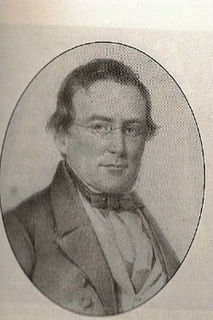 W
WBenjamin Franklin Bache was an American journalist, printer and publisher. He founded the Philadelphia Aurora, a newspaper that supported Jeffersonian philosophy. He frequently attacked the Federalist political leaders, including Presidents George Washington and John Adams, and historian Gordon S. Wood wrote that "no editor did more to politicize the press in the 1790s." His paper's heated attacks are thought to have contributed to passage of the Alien and Sedition Acts by the 5th United States Congress and signed by President John Adams in 1798.
 W
WThe Ben Franklin effect is a proposed psychological phenomenon: a person who has already performed a favor for another person is more likely to do another favor for the other than if they had received a favor from that person. An explanation for this is cognitive dissonance. People reason that they help others because they like them, even if they do not, because their minds struggle to maintain logical consistency between their actions and perceptions.
 W
WUSS Benjamin Franklin , the lead ship of her class of ballistic missile submarine, was the only submarine of the United States Navy to be named for Benjamin Franklin (1706–1790), the American journalist, publisher, author, philanthropist, abolitionist, public servant, scientist, librarian, diplomat, inventor, and Founding Father.
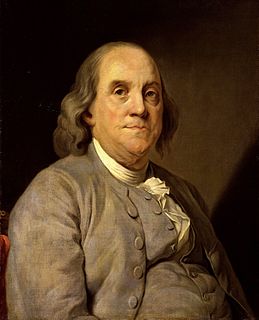 W
WThe Benjamin Franklin Award is an annual award for Open Access in the Life Sciences presented by Bioinformatics.org to an individual who has, in his or her practice, promoted free and open access to the materials and methods used in the life sciences.
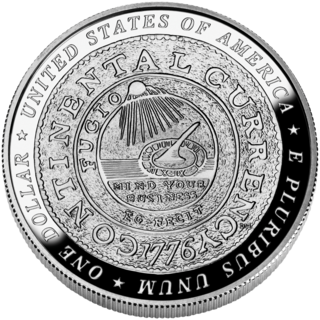 W
WThe Benjamin Franklin silver dollar is a commemorative coin issued by the United States Mint in 2006.
 W
WThe Biblioteca Benjamín Franklin is the Official Information Center of the United States Embassy in Mexico. The library provides the usual services expected of libraries such as lending material, providing reference and research assistance, storytimes, and conversation clubs. The library was named after Franklin to commemorate his statesmanship, humanitarianism, and friendship with the intention of fostering collaboration and understanding between the two countries.
 W
WThe Carpenters’ Company of the City and County of Philadelphia is the oldest extant craft guild in the United States. Founded in 1724, the Company consists of nearly 200 prominent Philadelphia area architects, building contractors and structural engineers and has had nearly 900 members in its almost three centuries of existence. The Company built, owns and continues to operate Carpenters' Hall located in Philadelphia's Independence National Historical Park. In 1774 the Hall served as the site of the First Continental Congress.
 W
WMrs. Silence Dogood was the pen name used by Benjamin Franklin to get his work published in the New-England Courant, a newspaper founded and published by his brother James Franklin. This was after Benjamin Franklin was denied several times when he tried to publish letters under his own name in the Courant. The 14 Mrs. Silence Dogood letters were first printed in 1722.
 W
WAbiah Folger Franklin was the mother of Benjamin Franklin, a Founding Father of the United States.
 W
WMayhew Folger was an American whaler who captained the sealing ship Topaz that rediscovered the Pitcairn Islands in 1808, while one of HMS Bounty's mutineers was still living.
 W
WFort Depuy, located in Shawnee on Delaware, is a village in Smithfield Township. It was one of many forts in Colonial Pennsylvania built in 1755 and 1756 during the French and Indian War.
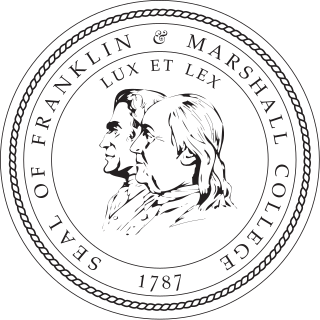 W
WFranklin & Marshall College (F&M) is a private liberal arts college in Lancaster, Pennsylvania. It employs 175 full-time faculty members and has a student body of approximately 2,400 full-time students.
 W
WFranklin bells are an early demonstration of electric charge designed to work with a Leyden jar. Franklin bells are only a qualitative indicator of electric charge and were used for simple demonstrations rather than research. This was the first device that converted electrical energy into mechanical energy in the form of continuous mechanical motion, in this case, the moving of a bell clapper back and forth between two oppositely charged bells.
 W
WFranklin Court is complex of museums, structures, and historic sites within Independence National Historical Park in Philadelphia, Pennsylvania. It is located at the site which American Patriot Benjamin Franklin had his Philadelphia residence from 1763 to his death in 1790.
 W
WWilliam Franklin was an American-born attorney, soldier, politician, and colonial administrator. He was the acknowledged illegitimate son of Benjamin Franklin. William Franklin was the last colonial Governor of New Jersey (1763–1776), and a steadfast Loyalist throughout the American Revolutionary War.
 W
WWilliam Temple Franklin Jr, known as Temple Franklin, was an American diplomat and real estate speculator. He is best known for his involvement with the American diplomatic mission in France during the American Revolutionary War. Beginning at the age of 16, he served as secretary to his grandfather Benjamin Franklin, who negotiated and agreed to the Franco-American Alliance.
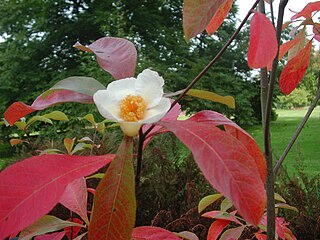 W
WFranklinia is a monotypic genus in the tea family, Theaceae. The sole species in this genus is a flowering tree, Franklinia alatamaha, commonly called the Franklin tree, and native to the Altamaha River valley in Georgia in the southeastern United States. It has been extinct in the wild since the early 19th century, but survives as a cultivated ornamental tree.
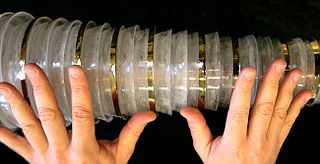 W
WThe glass harmonica, also known as the glass armonica, glass harmonium, bowl organ, hydrocrystalophone, or simply the armonica or harmonica, is a type of musical instrument that uses a series of glass bowls or goblets graduated in size to produce musical tones by means of friction.
 W
WWilliam Goddard was an American patriot and printer, born in New London, Connecticut who lived through the era of the American Revolution. Goddard served as an apprentice printer under James Parker and in 1762 became an early American publisher who eventually founded several newspapers during his lifetime. His mother, father and sister were also involved with printing and publishing in the middle 18th century. For a short term Goddard was also a postmaster of Providence, Rhode Island. Later his newspaper partnership with Benjamin Franklin in Philadelphia would play an important role in the development of Franklin's ideas for a postal system in the soon to be united colonies. Franklin was postmaster of Philadelphia from 1759 to 1775 when he was dismissed by the British Crown for exposing the letters of Massachusetts Governor Thomas Hutchinson. Goddard's association with Franklin while he was serving as the Postmaster in Philadelphia played an important role when Franklin was introducing many of the reforms and improvements needed in the colonial postal system currently in use.
 W
WBenjamin Franklin House is a museum in a terraced Georgian house at 36 Craven Street, London, close to Trafalgar Square. It is the last-standing former residence of Benjamin Franklin, one of the Founding Fathers of the United States. The house dates from c. 1730, and Franklin lived and worked there for sixteen years. The museum opened to the public on 17 January 2006. The chairman is American-British investment banker and philanthropist John Studzinski.
 W
WFort Hyndshaw was a fort in Middle Smithfield Township, Monroe County, Pennsylvania, built in 1755 and 1756 during the French and Indian War.
 W
WThe kite experiment is a scientific experiment in which a kite with a pointed, conductive wire attached to its apex is flown near thunder clouds to collect electricity from the air and conduct it down the wet kite string to the ground. It was proposed and may have been conducted by Benjamin Franklin with the assistance of his son William Franklin. The experiment's purpose was to uncover the unknown facts about the nature of lightning and electricity, and with further experiments on the ground, to demonstrate that lightning and electricity were the result of the same phenomenon.
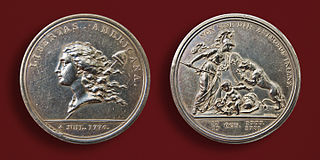 W
WThe Libertas Americana was a medal made to commemorate the American Revolution. It was designed in part by Benjamin Franklin.
 W
WThe Memorial to the 56 Signers of the Declaration of Independence is a memorial depicting the signatures of the 56 signatories to the United States Declaration of Independence. It is located in the Constitution Gardens on the National Mall in Washington, D.C. The memorial is accessible to the public by crossing a wooden bridge onto a small island set in the lake between Constitution Avenue and the Reflecting Pool, not far from the Vietnam Veterans Memorial.
 W
WDeborah Read Franklin was the common-law wife of Benjamin Franklin, polymath and one of the Founding Fathers of the United States.
 W
WAlexandre-Henry-Guillaume le Roberger de Vausenville was a French astronomer and mathematician.
 W
WAlexander Small was a Scottish surgeon and scholar, and a friend and frequent correspondent of Benjamin Franklin.
 W
WThe Royal Commission on Animal Magnetism involved two entirely separate and independent French Royal Commissions, each appointed by Louis XVI in 1784, that were conducted simultaneously by a committee composed of five scientists from the Royal Academy of Sciences and four physicians from the Paris Faculty of Medicine , and a second committee composed of five physicians from the Royal Society of Medicine .
 W
WUnion Fire Company, sometimes called Franklin's Bucket Brigade, was a volunteer fire department formed in Philadelphia in 1736 with the assistance of Benjamin Franklin. It was the very first firefighting organization in Philadelphia, although it was followed within the year by establishment of the Fellowship Fire Company. The fire company was formed on 7 December 1736 after a series of publications in the Pennsylvania Gazette by Franklin and others pointing out the need for more effective handling of fires in Philadelphia and remained active until approximately 1820. Although modeled after the Mutual Fire Societies of Franklin's native Boston, the Union Fire Company protected all members of the community rather than only the members of the company.
 W
WGeorge Whitefield, also known as George Whitfield, was an Anglican cleric and evangelist who was one of the founders of Methodism and the evangelical movement.
 W
WJohn Winthrop was the 2nd Hollis Professor of Mathematics and Natural Philosophy in Harvard College. He was a distinguished mathematician, physicist and astronomer.
 W
W W
W